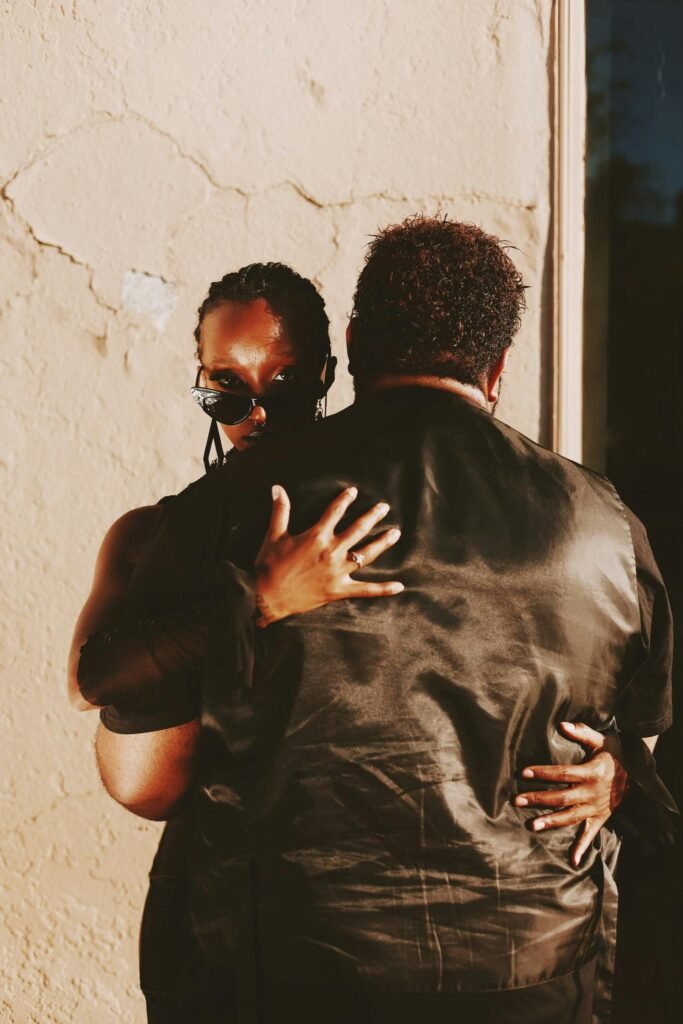Leather wallets hold a special place in our everyday lives, serving as a reliable companion for carrying our essential cards, cash, and identification. But have you ever considered the importance of preserving these timeless accessories? From maintaining their quality and durability to embracing their remarkable patina over time, taking care of your leather wallet goes beyond mere aesthetics. Discover how preserving your leather wallet not only ensures its longevity but also adds a touch of sophistication to your overall style. Whether you’re a seasoned leather enthusiast or a newbie seeking guidance, this article explores the significance of preserving leather wallets and offers invaluable tips for keeping them in pristine condition.

This image is property of images.pexels.com.
Understanding the Value of Leather Wallets
Leather wallets are a timeless accessory that not only serve a practical purpose but also add a touch of elegance and sophistication to your everyday life. Understanding the value of leather wallets goes beyond their aesthetic appeal and entails appreciating their durability, stylish design, versatility, and functionality.
Durability and long lifespan
One of the key reasons why leather wallets have stood the test of time is their exceptional durability. Leather, being a strong and sturdy material, can withstand the rigors of everyday use without losing its shape or integrity. Unlike wallets made from other materials that may easily show signs of wear and tear, leather wallets can last for years, if not decades, with proper care and maintenance. Investing in a high-quality leather wallet means you can enjoy its functionality for a long time to come.
Timeless and stylish design
Leather wallets have a distinct charm that transcends style trends. Their classic design and elegant finish make them a versatile accessory suitable for any occasion. Whether you’re dressed casually or attending a formal event, a leather wallet will effortlessly complement your attire. Moreover, leather wallets often develop a unique patina over time, adding to their character and enhancing their visual appeal. The timeless design of leather wallets ensures that they remain in vogue and never go out of style.
Versatility and functionality
Leather wallets are designed to be practical and cater to your storage needs. They feature multiple compartments and card slots, allowing you to keep your cash, cards, identification, and other essentials well-organized. The versatility of leather wallets makes them suitable for both men and women, with various sizes and styles available to accommodate different preferences. Whether you prefer a slim and minimalist design or a wallet with more storage capacity, leather wallets offer options that cater to your specific needs.
Factors Affecting Leather Wallet Deterioration
While leather wallets are known for their durability, they are not impervious to damage. Several factors can contribute to the deterioration of leather over time, including exposure to moisture and humidity, direct sunlight and heat, and contact with harsh chemicals.
Exposure to moisture and humidity
Leather is susceptible to damage when exposed to excessive moisture or humidity. Prolonged exposure can cause the leather to become brittle, warp, or develop unsightly water stains. It is important to keep your leather wallet dry and avoid using it in rainy conditions. Additionally, storing your wallet in a cool, dry place will help prevent the growth of mold or mildew, which can significantly impact its longevity.
Direct sunlight and heat
Leather wallets should be protected from direct sunlight and excessive heat. Intense sun exposure can cause the leather to fade, dry out, and become prone to cracking. Similarly, placing your wallet near a heat source, such as a radiator or heater, can have similar detrimental effects. To preserve the quality of your leather wallet, avoid leaving it in direct sunlight or subjecting it to extreme heat for prolonged periods.
Contact with harsh chemicals
Contact with harsh chemicals, such as cleaning solvents or alcohol-based products, can cause irreversible damage to your leather wallet. These substances can strip the leather of its natural oils, leading to drying, discoloration, and cracking. It is best to avoid exposing your wallet to such chemicals and instead opt for mild cleaning solutions specifically formulated for leather.

This image is property of images.pexels.com.
Proper Cleaning and Maintenance
Regular cleaning and maintenance are essential for preserving the quality and lifespan of your leather wallet. By following a few simple steps, you can ensure that your wallet remains in optimal condition for years to come.
Regular cleaning with a soft cloth
Dust, dirt, and debris can accumulate on the surface of your leather wallet over time. To remove these particles, use a soft, lint-free cloth to gently wipe the surface of the wallet. Avoid using excessive force, as it may damage the leather. Regular cleaning will prevent dirt buildup and keep your wallet looking fresh and clean.
Conditioning and moisturizing
Leather, like human skin, needs moisture to maintain its suppleness and prevent drying. Applying a leather conditioner or moisturizer at regular intervals helps replenish the natural oils in the leather, keeping it soft and preventing it from cracking. Be sure to follow the manufacturer’s instructions when choosing a suitable conditioner for your leather wallet.
Avoidance of excessive water or soap usage
While cleaning your leather wallet is important, it is crucial to avoid using excessive amounts of water or soap. Water can damage the leather and cause it to lose its shape, while soap may strip off its natural oils. If your wallet becomes stained or soiled, use a damp cloth with mild soap specifically made for leather cleaning. Always remember to test the cleaner on a small, inconspicuous area before applying it to the entire wallet.
Preventing Stains and Marks
Prevention is key when it comes to maintaining the pristine appearance of your leather wallet. By taking a few precautions and being mindful of your wallet’s surroundings, you can minimize the risk of stains and marks.
Using leather protectants or water repellents
Leather protectants and water repellents create a barrier that repels water, oil, and other substances. Applying these products to your wallet can help prevent stains and minimize the absorption of liquids or oils into the leather. However, it is important to choose a protectant or repellent specifically designed for leather and to follow the application instructions carefully.
Avoiding contact with oily or colored substances
Leather is porous and can easily absorb oils and pigments from substances it comes into contact with. To avoid unwanted stains, be cautious when handling your wallet around oily foods, colored liquids, or makeup products. If accidental contact does occur, quickly blot the affected area with a clean cloth to minimize absorption.
Proper storage to prevent friction and scratching
Proper storage is crucial for preventing scratches and other forms of physical damage to your leather wallet. Ideally, store your wallet in a separate compartment or a dedicated section of your bag to minimize friction and contact with other objects. It is also advisable to avoid placing sharp or abrasive objects near your wallet, as they can leave permanent marks or indentations.

This image is property of images.pexels.com.
Addressing Scratches and Scuffs
Despite our best efforts, scratches and scuffs may still occur on our leather wallets. Fortunately, there are several methods you can employ to address these blemishes and restore your wallet’s appearance.
Applying leather conditioner or oil
Minor scratches and scuffs can often be mitigated by using a leather conditioner or oil. These products work by moisturizing the leather, which can help lessen the appearance of surface damage. Apply a small amount of conditioner or oil to a soft cloth and gently rub it onto the affected area in a circular motion. Allow the leather to absorb the product and then buff the area with a clean cloth to restore its shine.
Using leather repair kits
For more severe scratches or deeper damage, leather repair kits can be a valuable solution. These kits typically include instructions and the necessary tools or materials for repairing leather. Follow the instructions carefully, as improper use of the kit may cause additional damage. If you are unsure about using a repair kit, it is advisable to seek professional assistance to ensure the best outcome.
Seeking professional restoration if necessary
In some cases, professional restoration may be necessary to address extensive scratches, scuffs, or other significant damage to your leather wallet. Leather artisans and restoration experts have the expertise and tools needed to repair and rejuvenate your wallet effectively. They can address a wide range of issues, from color restoration to structural repairs. If you have a valuable or cherished leather wallet, it is worth considering professional restoration to restore it to its former glory.
Avoiding Exposure to Extreme Temperatures
Extreme temperatures can have a detrimental effect on the quality of your leather wallet. By taking simple precautions, you can protect your wallet from damage caused by heat and freezing temperatures.
Preventing heat damage and drying
Leaving your leather wallet in a hot car, near a heater, or in direct sunlight can cause heat damage and drying. Excessive heat can lead to the leather losing its natural moisture, becoming brittle, and developing cracks. To protect your wallet, always avoid leaving it in areas with high temperatures, and instead, keep it in a cool and well-ventilated space.
Protection from freezing temperatures
Extreme cold can also affect the quality of leather. Freezing temperatures can cause leather to become stiff, brittle, and prone to cracking. If you live in a region with cold winters, take precautions to protect your wallet from prolonged exposure to freezing temperatures. Keep your wallet in a bag or coat pocket close to your body to provide some insulation against the cold.
Proper storage in moderate climate
Regardless of the weather conditions outside, it is essential to store your leather wallet in a moderate climate. Extreme temperature fluctuations can cause the leather to expand and contract, leading to warping or cracking. Find a storage area in your home that maintains a consistent temperature and humidity level to ensure your wallet remains in optimal condition.
Proper Storage and Organization
Storing your leather wallet correctly is crucial for maintaining its shape, minimizing the risk of damage, and prolonging its lifespan. Follow these tips to ensure proper storage and organization.
Using leather-specific storage accessories
When it comes to storing your leather wallet, it is best to use accessories specifically designed for leather. Leather wallets may come with a dust bag or a protective pouch to keep them safe when not in use. These accessories protect the wallet from dust, sunlight, and potential scratches when stored alongside other items.
Keeping away from sharp objects
Avoid storing your leather wallet near sharp objects that can potentially cause scratches or punctures. Keys, metal accessories, or any other sharp items should be kept separate from your wallet to prevent accidental damage.
Avoiding overcrowding and excess pressure
Overcrowding your wallet or placing excessive pressure on it can cause the leather to stretch, warp, or lose its shape. It is important to organize your wallet so that it is not overstuffed with cards, bills, or receipts. This prevents unnecessary strain on the leather and ensures that the wallet retains its original structure.
Preserving Wallet Shape and Structure
Preserving the shape and structure of your leather wallet is essential for maintaining its functionality and aesthetic appeal. By following these guidelines, you can ensure your wallet looks its best for years to come.
Avoiding overstuffing and excessive weight
While leather wallets are designed to hold your essential items, they have their limits. Overstuffing your wallet or placing excessive weight on it can lead to strain, stretching, and deformation of the leather. Be mindful of what you carry in your wallet, regularly reassess its contents, and remove any unnecessary items.
Using inserts or dividers
If you find that your wallet is becoming too bulky or the contents are starting to lose their organization, consider using inserts or dividers. These accessories help compartmentalize your items and prevent them from shifting around inside the wallet. By using inserts or dividers, you can maintain the shape and organization of your wallet, even with a larger number of items.
Regular reshaping and pressing
To maintain the original shape and cleanliness of your leather wallet, it is recommended to periodically reshape and press it. Gently reshaping the wallet by hand allows the leather to settle back into its original shape after being stretched or distorted. You can also use a light press using a clean cloth or a book to ensure any minor creases or wrinkles are smoothed out.
Repairing Loose or Torn Parts
Over time, the wear and tear on a leather wallet may cause parts to become loose or torn. By taking prompt action and using appropriate repair methods, you can address these issues before they worsen.
Using leather glue or adhesive
For minor repairs such as loose stitching, detached parts, or small tears, you can use leather glue or adhesive to secure them back in place. Make sure to choose a high-quality adhesive specifically designed for leather and follow the instructions provided. Apply a small amount of glue or adhesive to the affected area, press it firmly together, and allow it to dry completely before using the wallet again.
Seeking professional assistance if needed
If the damage to your leather wallet is extensive or beyond your ability to repair, it is advisable to seek professional assistance. Leather craftsmen and repair specialists possess the skills and expertise needed to restore your wallet to its original condition. They can reattach loose parts, reinforce stitching, and repair more significant tears or damage with precision.
Avoiding makeshift repairs
While it may be tempting to try do-it-yourself repairs using materials at hand, it is generally best to avoid makeshift repairs on your leather wallet. Unprofessional repairs can lead to further damage and compromise the overall integrity of the wallet. If in doubt, it is always better to seek professional help to ensure that your wallet is repaired correctly and effectively.
Knowing When to Replace a Leather Wallet
Despite our best efforts to maintain and preserve our leather wallets, there may come a time when a replacement is necessary. Several factors can influence this decision, and it is important to recognize the signs that indicate the need for a new wallet.
Assessing irreparable damage
If your leather wallet has suffered irreparable damage, such as extensive tearing, deep scratches, or severe discoloration, it may be time to retire it. These issues may compromise the functionality and aesthetic appeal of the wallet, making it impractical to continue using it.
Recognizing signs of structural weakness
When a leather wallet starts to develop signs of structural weakness, such as loose stitching, weak seams, or sagging pockets, it may not be able to hold your items securely anymore. If your wallet can no longer meet your storage needs or fully protect your valuables, it may be a good indication that it is time for a replacement.
Considering functionality and personal preference
While a leather wallet may still be structurally intact and in good condition, personal preference or changing needs can also warrant the purchase of a new wallet. If you find that your current wallet no longer meets your storage requirements, style preferences, or functional needs, it may be time to explore alternative options.
In conclusion, understanding the value of leather wallets goes beyond their aesthetic appeal. Their durability, timeless design, versatility, and functionality make leather wallets a worthy investment. By taking proper care of your leather wallet and following the guidelines for cleaning, storage, and maintenance, you can ensure that it remains a reliable and stylish accessory for years to come. However, when repair is no longer feasible or your wallet no longer meets your needs and preferences, knowing when to replace it is equally important. By recognizing the signs of wear and taking timely action, you can continue to enjoy the timeless elegance and functionality of leather wallets.
